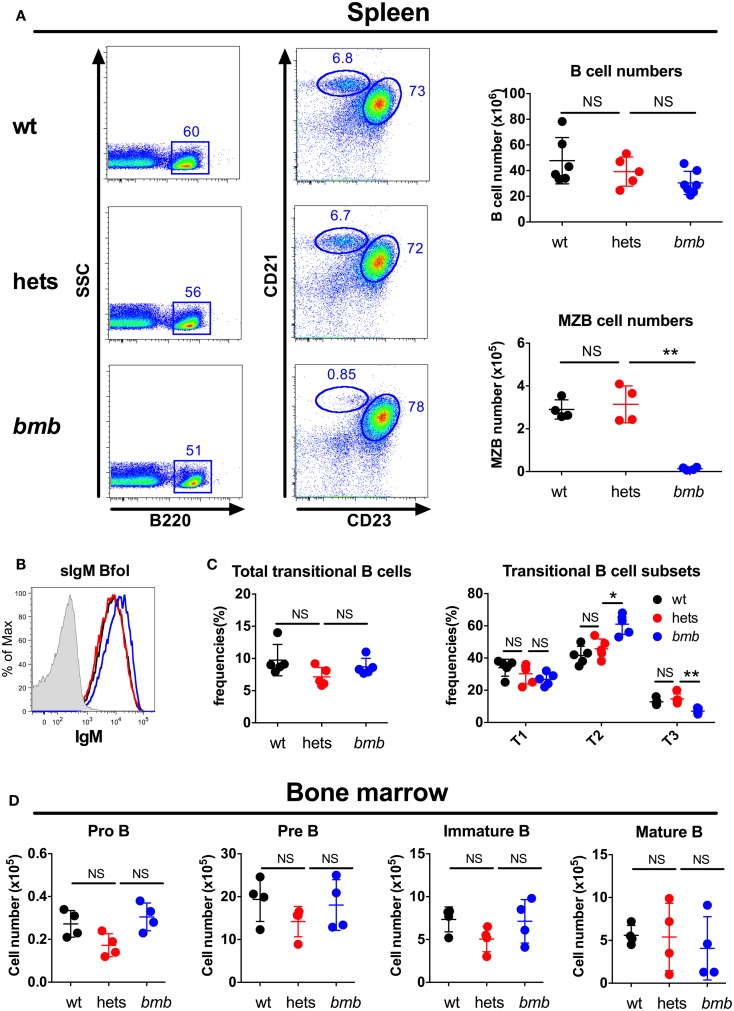Figure 3.
Heterozygous bumble mice have normal frequencies of the major B cell subsets. Total B cells, marginal zone B cells (MZB), and transitional B cells were stained by FACS in wild-type (wt), heterozygous (hets), and bumble (bmb) mice. (A) Left panel: representative staining of marginal zone B cells (MZB, B220+, CD23−, and CD21hi) and follicular B cells (B220+, CD23+, and CD21+). Right panel: total B cell (B220+) and MZB cell numbers. (B) Representative staining of surface IgM (sIgM) on wt (black), heterozygous (blue), and bumble (blue) follicular B cells. (C) Splenic transitional B cells (B220+ and CD93+), further subdivided into T1 (CD23−IgM+), T2 (CD23+IgM+), and T3 (CD23+IgMlo). (D) Bone marrow B cell progenitors, pro B (B220+CD43+CD19+CD93+), pre B (B220+CD43−IgM−CD93+), immature B (B220+CD43−IgM+CD93+), and mature B cells (B220+CD43−IgM+CD93−). For transitional and progenitor B cell gating strategy, see Figure S1 in Supplementary Material. Figures represent 8- to 16-week-old mice with four to seven mice per group, and results are representative of at least two independent experiments. Graphs display mean + SD. Statistically significant differences between bumble, bumble heterozygotes, and wt mice are indicated by *p < 0.05 by Mann–Whitney test.

